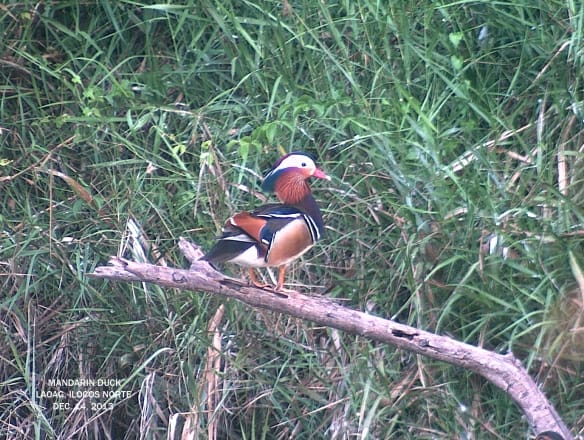by Jops Josef
The Wild Bird Club of the Philippines recently released the 2012 Bird Records. This is a compilation of all the bird sightings that were reported in 2012.
The report can be downloaded by clicking on the link at the end of the article.
Records Committee member Jops Josef writes about the significance of the club’s bird records and describes how the records are made.
Records will be the backbone of the Club and will give its credibility.
The Wild Bird Club of the Philippines has been keeping bird records even before the club was formalized. James McCarthy, one of the Club’s founding members, made it a point to have members submit reports of their sightings after each trip. He knew that bird records are one of the pillars of any birdwatching organization and will give WBCP its credibility. And was he right even then! The WBCP holds the most extensive database of bird records in the Philippines to date. This data is used by government and fellow non-government organizations.

From L-R: Andrew Galano, Mike Lu (founding), Jon Villasper (founding), Natalie McCarthy, James McCarthy (founding), Kitty Arce (founding)
According to Mike Lu, also a founding member of WBCP, records keeping back then was pretty simple – members simply sent their trip reports via the email group, which would then be picked up by him and Ned Liuag to be manually encoded into a spreadsheet that they kept. However, within two years of forming the Club, and with more reports being sent in by more members of the Club, a team was formed to come up with a more formal system of reporting. That team, composed of Mark Villa, Jon Villasper, and Pia Belardo, developed the system of reporting that is currently being used by WBCP members . The system – which uses a spreadsheet and a database – have not only made submitting trip reports easier, but it also minimized mistakes in the report submission process and made it faster to retrieve and generate reports of bird sightings.
How the Yearly Report is made.
The yearly reports of the WBCP mainly consists of the trip reports and random reports from WBCP members. But with more people becoming more aware of birdwatching, other sources such as websites, blogs, social networking sites, tour reports, bird forums, and emails sent to WBCP requesting help in identification, are also included in the yearly reports. WBCP also participates in the annual Asian Waterbird Census, the results of which also become part of the database.

The WBCP wants more areas to be covered in the reports. The efforts of WBCP in mining out and collating sightings gives the only fair picture of bird life in the Philippines. To date, no other organization except the WBCP is doing this.
The accuracy of each sighting is important to establish the credibility of the yearly reports. The WBCP Records Committee reviews each report when it is submitted and again during the drafting of the yearly reports. The Records Committee looks out for rarities, country records, and sightings that may have not been previously reported in a specific area or may not occur in an area due to different scientific factors. Flagged records are verified by asking the reporter for complete field notes or pictures, if available. Since it is easy to mis-identify some bird species, the Records Committee does not include flagged sightings in the yearly reports, but keeps these on record in case additional evidence supporting the sighting is submitted.

From L-R: Arne Jensen, Tinggay Cinco, Rob Hutchinson, Mike Lu, Christian Perez, Leni Sutcliffe
and Mark Jason Villa
Photo credit: Maia Tañedo
Importance of Bird Records.
Birds are a good indicator of the quality of the environment. As long as there remains a suitable habitat for birds, certain species will continue to thrive, even in a bustling city. But any change in the environment, as what we are observing now as a result of climate change and habitat destruction to name a few, birds would be the first species to migrate to other areas. Recording a number of bird species within one area would mean that the environment is still of good quality. An environment good for birds and other wildlife would mean an environment good for people to live in.
The WBCP has always advocated that birdwatching and the submission of bird records are forms of citizen science. By submitting bird records, the non-scientific community is given the opportunity to contribute information that can be used by scientists in their studies and affect policies that would hopefully improve the quality of the environment we live in.

Photo credit: Maia Tañedo
Click on this link to download the 2012 WBCP Records
You can help!
Even non-WBCP members can contribute to the yearly report! Our forms can be accessed and downloaded by the public through this link: https://birdwatch.ph/html/corp/subrecords.html
Note: for non-WBCP members, you may submit the filled-up WBCP Trip Report Form updated 17 May 2014 DIRECTLY to wbcpstr@gmail.com. You may skip the step on posting on BirdwatchPhilippines@yahoogroups.com as only WBCP members can post here.
